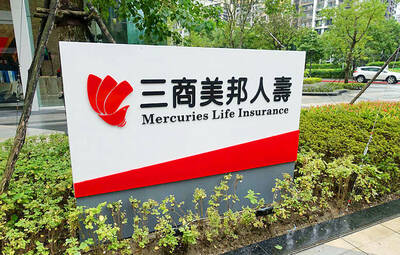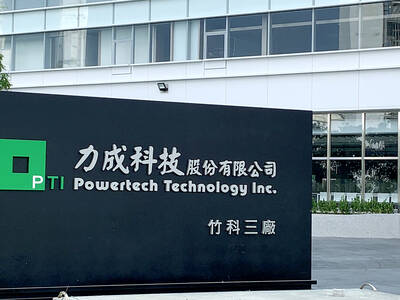The New Taiwan dollar rose the most in three months as a US plan to inject liquidity into the world’s biggest economy spurred rallies in global stocks and bolstered investor demand for riskier assets.
The NT dollar climbed for a fourth day as stock exchange data showed purchases of Taiwanese equities by foreigners exceeded sales for the seventh straight day. All 10 of the most-active currencies in Asia outside Japan strengthened against the greenback after the US Federal Reserve pledged to buy as much US$300 billion of Treasuries and more mortgage bonds to help contain the deepening recession.
“The NT dollar, along with many regional currencies, has been benefiting from the improved investment sentiment in the past week and the continuing stock gains,” said David Cohen, director of Action Economics in Singapore.
The NT dollar appreciated 0.7 percent yesterday to close at NT$33.924 against the greenback. It earlier gained as much as 1.1 percent, touching a five-week high of NT$33.789.
The MSCI Asia Pacific Index of regional stocks surged more than 10 percent in the five trading sessions through yesterday, posting its longest winning streak since Jan. 5. The Standard & Poor’s 500 Index of US stocks rose to a one-month high.
Fed Chairman Ben Bernanke has stepped up efforts to prevent the credit contraction from deepening what already may be the worst recession in 60 years. The global slump is roiling Asian economies, which are almost twice as reliant on exports as the rest of the world. Taiwan’s overseas sales, equivalent to about 70 percent of GDP, fell 37.2 percent in the first two months of this year, the largest slide on record. China and the US are Taiwan’s biggest markets.
“It’s going to roller-coaster for a while with the uncertainties clouding the global outlook, and with Taiwan more exposed to the market’s collapse,” Cohen said.
The NT dollar faces a bigger risk of losses than most Asian currencies because Taiwan’s economy is more dependent on exports, Calyon said.
“We’ve yet to see the impact of the global slowdown on the NT dollar,” said Sebastien Barbe, the Hong Kong-based head of emerging market strategy at the investment-banking unit of France’s Credit Agricole SA. “Taiwan is very vulnerable because it’s very focused on exports. The risk in the currency is stronger than it used to be.”
Implied volatility on one-month US dollar-NT dollar options climbed to 11.4 percent, the highest since Nov. 25, Bloomberg data show. Traders quote implied volatility, a gauge of expected swings in exchange rates, as part of pricing options. The gauge was at 10.8 percent at the end of last year.
A similar measure of swings in the South Korean won fell to 31 percent on Wednesday from 50 percent on Dec. 31, while that for the Indonesian rupiah fell to 24 percent from 38 percent. Overseas shipments are equivalent to 60 percent of GDP in South Korea and 30 percent in Indonesia.

Mercuries Life Insurance Co (三商美邦人壽) shares surged to a seven-month high this week after local media reported that E.Sun Financial Holding Co (玉山金控) had outbid CTBC Financial Holding Co (中信金控) in the financially strained insurer’s ongoing sale process. Shares of the mid-sized life insurer climbed 5.8 percent this week to NT$6.72, extending a nearly 18 percent rally over the past month, as investors bet on the likelihood of an impending takeover. The final round of bidding closed on Thursday, marking a critical step in the 32-year-old insurer’s search for a buyer after years of struggling to meet capital adequacy requirements. Local media reports

US sports leagues rushed to get in on the multi-billion US dollar bonanza of legalized betting, but the arrest of an National Basketball Association (NBA) coach and player in two sprawling US federal investigations show the potential cost of partnering with the gambling industry. Portland Trail Blazers coach Chauncey Billups, a former Detroit Pistons star and an NBA Hall of Famer, was arrested for his alleged role in rigged illegal poker games that prosecutors say were tied to Mafia crime families. Miami Heat guard Terry Rozier was charged with manipulating his play for the benefit of bettors and former NBA player and

The DBS Foundation yesterday announced the launch of two flagship programs, “Silver Motion” and “Happier Caregiver, Healthier Seniors,” in partnership with CCILU Ltd, Hondao Senior Citizens’ Welfare Foundation and the Garden of Hope Foundation to help Taiwan face the challenges of a rapidly aging population. The foundation said it would invest S$4.91 million (US$3.8 million) over three years to foster inclusion and resilience in an aging society. “Aging may bring challenges, but it also brings opportunities. With many Asian markets rapidly becoming super-aged, the DBS Foundation is working with a regional ecosystem of like-minded partners across the private, public and people sectors

BREAKTHROUGH TECH: Powertech expects its fan-out PLP system to become mainstream, saying it can offer three-times greater production throughput Chip packaging service provider Powertech Technology Inc (力成科技) plans to more than double its capital expenditures next year to more than NT$40 billion (US$1.31 billion) as demand for its new panel-level packaging (PLP) technology, primarily used in chips for artificial intelligence (AI) applications, has greatly exceeded what it can supply. A significant portion of the budget, about US$1 billion, would be earmarked for fan-out PLP technology, Powertech told investors yesterday. Its heavy investment in fan-out PLP technology over the past 10 years is expected to bear fruit in 2027 after the technology enters volume production, it said, adding that the tech would